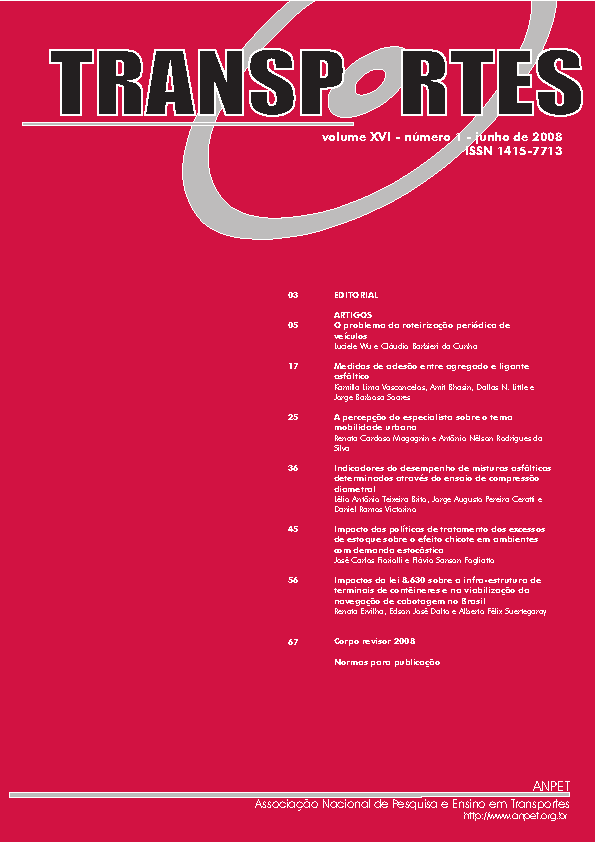Impactos da lei 8.630 sobre a infra-estrutura de terminais de contêineres e na viabilização da navegação de cabotagem no Brasil
DOI:
https://doi.org/10.14295/transportes.v16i1.12Abstract
Com a reforma da legislação portuária e o processo de privatização dos portos, os terminais públicos marítimos passaram por significativa reestruturação. O elevado investimento e a simplificação da lei propiciaram o aumento de produtividade e de segurança e redução das tarifas. A melhoria nos terminais de contêineres viabilizou a consolidação da navegação de cabotagem de carga geral, como alternativa de transporte rodoviário. Estas mudanças trouxeram novas perspectivas na prestação de serviço por parte dos armadores, no sentido de atender plenamente as necessidades de transportes dos embarcadores, através de um serviço logístico completo porta-a-porta, como alternativa ao transporte porto-a-porto, incluindo a oferta de transporte multimodal, estufagem de contêineres e armazenagem. São ainda apresentados dois exemplos práticos de transporte de resinas no sentido norte-sul e de arroz, no sentido oposto, ilustrando como as mudanças no setor favoreceram a migração do transporte rodoviário para o marítimo.
Abstract With the changing on port legislation and privatization process in Brazilian ports, the maritime public terminals passed trough an important restructuring. The expressive investment and simplification on law brought productivity and security improvement and reduced fees. The enhancement on container terminals enabled strengthening of cabotage navigation as an alternative to road transportation. These changes brought new perspective on service offered by shipowners, in a sense of attending the fully transport necessities of the shippers, by a complete logistic service door-to-door, as alternative to a port-to-port transportation, including the multimodal transport offering, container filling and wholesaling. It is so introduced two practical examples of transportation of gum, over the north-south bound and rice over the opposite direction, illustrating how changes on the sector favored the migration from road transport to maritime one.
Downloads
Downloads
Published
How to Cite
Issue
Section
License
Authors who submit papers for publication by TRANSPORTES agree to the following terms:
- The authors retain the copyright and grant Transportes the right of first publication of the manuscript, without any financial charge, and waive any other remuneration for its publication by ANPET.
- Upon publication by Transportes, the manuscript is automatically licensed under the Creative Commons License CC BY 4.0 license. This license permits the work to be shared with proper attribution to the authors and its original publication in this journal, and to be adapted for non-commercial purposes, provided appropriate credit is given and any derivative works are distributed under the same terms.
- Authors are authorized to enter into additional separate contracts for the non-exclusive distribution of the version of the manuscript published in this journal (e.g., publishing in an institutional repository or as a book chapter), with recognition of the initial publication in this journal, provided that such a contract does not imply an endorsement of the content of the manuscript or the new medium by ANPET.
- Authors are permitted and encouraged to publish and distribute their work online (e.g., in institutional repositories or on their personal websites) after the editorial process is complete. As Transportes provides open access to all published issues, authors are encouraged to use links to the DOI of their article in these cases.
- Authors guarantee that they have obtained the necessary authorization from their employers for the transfer of rights under this agreement, if these employers hold any copyright over the manuscript. Additionally, authors assume all responsibility for any copyright infringements by these employers, releasing ANPET and Transportes from any responsibility in this regard.
- Authors assume full responsibility for the content of the manuscript, including the necessary and appropriate authorizations for the disclosure of collected data and obtained results, releasing ANPET and Transportes from any responsibility in this regard.









